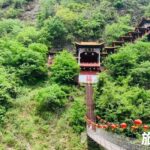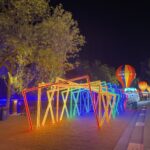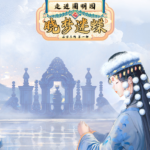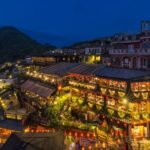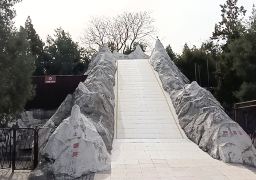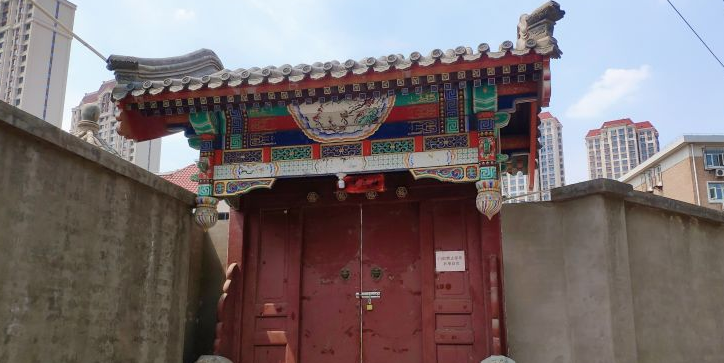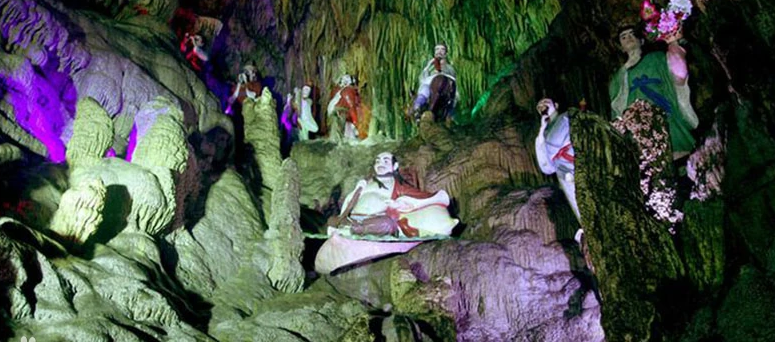The New Taipei City Gold Museum allows you to view gold collections and more than 140 kinds of characteristic minerals up close. Experience the historical and cultural heritage of mining in East Asia and visit traditional Japanese-style dormitories. Admire the charming natural scenery and recall the bits and pieces of gold mining after World War II. The Gold Museum takes the mining history and gold of Jinguashi as the core theme and integrates the settlement appearance, mining history, local culture and ecological landscape of the Jinguashi area to conduct an overall planning, thus developing a new look for this area and bringing new vitality.
Combined with community forces, the precious natural, mining ruins, landscape features, historical memories and cultural assets of the Jinguashi area are completely preserved and given new life. The tourist service center of the New Taipei City Gold Museum provides tourist information and consultation on museum guided tours and other related services. The Gold Exhibition Hall is divided into two major exhibition areas on the first and second floors. The exhibition theme on the first floor is ‘The mountain city under the golden light’, showing the humanistic historical development of the century-old mining industry. On the second floor, in addition to displaying the representative collection of large gold bricks, another exhibition theme of ‘Treasures of the Earth’ is planned, with a total of about 140 kinds of rich minerals on display. The Four-connected Dormitories are well-preserved and complete Japanese-style dormitories. The interior furnishings and daily objects remind people of the past. The exterior red bricks and black tiles form the mountain city characteristics of the Jinguashi area. The Gold Refining Building is a two-story brick building. On the right side of the first floor is a small special exhibition room, which launches special exhibitions on current themes from time to time. On the left side of the first floor is the gold refining theater space. The second floor is also a permanent exhibition room, providing the fun of ‘river panning for gold’ through multimedia interactive experience. It is famous for the rumor that the crown prince of Japan during the Japanese occupation period (later the Showa Emperor) stayed here. The surrounding area is densely shaded and secluded. Its architectural style belongs to the traditional Japanese-style academy style, incorporating Western-style space to form the fashionable Japanese-Western eclectic architecture.The opening hours are from 09:30 to 17:00 on Mondays to Fridays throughout the year; from 09:30 to 18:00 on Saturdays and Sundays throughout the year. · The museum is closed on the first Monday of each month (if it coincides with a legal holiday, it will be open as usual and closed the next day). · There are differences between some holidays in Taiwan and those in the mainland. In addition to New Year’s Day, Tomb Sweeping Day, Labor Day, Dragon Boat Festival, and Mid-Autumn Festival, February 28th (Peace Memorial Day), April 4th (Children’s Day), and October 10th (Anniversary of the 1911 Revolution) are also holidays. It is open as usual and closed the next day.

Preferential policies: Children: Children under 12 years old are free. Taiwan residents: Citizens of New Taipei City, seniors over 65 years old, students of all levels of schools, people with disabilities and their companions, indigenous people over 55 years old, those holding low-income household certification, volunteers holding honorary cards for volunteer services, and members of the Taiwan Museum Association are free.
Service Facilities Bathroom: There are accessible services including accessible parking lots, accessible entrances, and accessible bathrooms.
Essential Tips: Limited parking spaces are available around the park. During holidays and during the Gold Festival period, traffic control will be implemented around the Gold Museum Park. Visitors who drive should park their vehicles at Parking Lot No. 9 or Shuinan Cave Parking Lot and then take the shuttle bus.